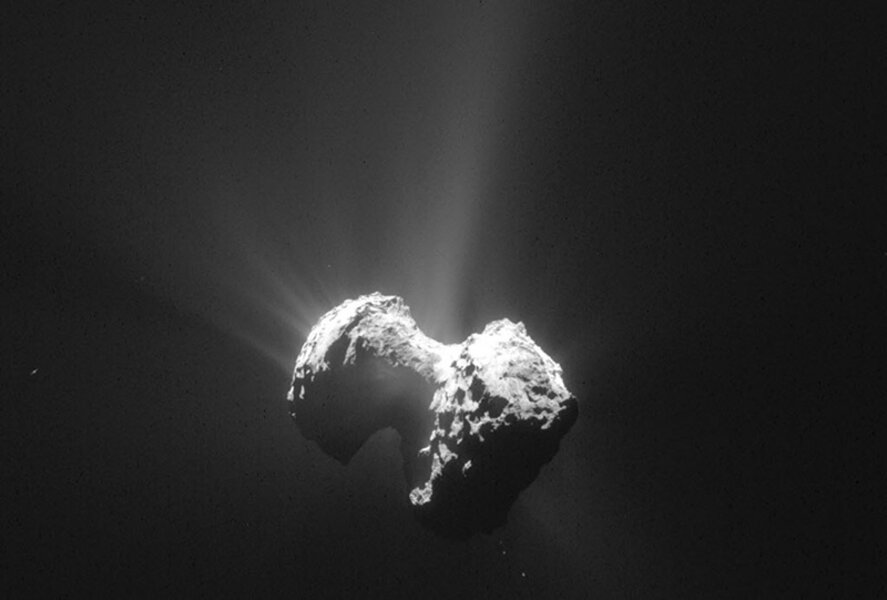Interactive, 3D model of Rosetta's comet: A perihelion present?
Loading...
People can now see the Rosetta comet through a new, vivid lens.
Scientists released an interactive visual representation of Rosetta’s comet Thursday, which models how the surface of the comet changes as it rotates, the European Science Agency says.
The tool, which includes a texture map, will allow users to rotate and pan across the comet, the ESA said in a blog post.
The new shape model can help them with “calibrating data, studying changes on the surface, and for investigating the geology and morphology of the comet,” wrote ESA scientists.
On Thursday, the comet is making its closest approach to the sun, a phenomenon called "perihelion," before swinging back out towards Jupiter. Rosetta's comet, known as 67P/Churyumov–Gerasimenko, takes this loop through the solar system every 6.5 years. On August 13, it will be "only" 115 million miles from the sun, but in three years, when it reaches "aphelion" just beyond Jupiter's orbit, it will be over 500 million miles away, and will be colder, darker, and much less active than it is now.
The weeks surrounding perihelion are especially important for scientists.
The Washington Post reports:
The comet's levels of activity (melting and spewing gas, for example) have been going up steadily, and this time will give scientists access to crucial data that might otherwise have stayed locked away in ice. In fact, the highest activity levels aren’t expected to happen on perihelion, exactly. Proximity to the sun will warm the comet up more over time, so it's hard to say when the comet will have its peak day of spewing gas and vapor.
The last few weeks have seen a dramatic increase in the comet's activity.
“On July 29, Rosetta observed the most dramatic outburst yet,” the ESA wrote in a blog post. A plume of gas erupted from the nucleus, changing the shape and composition of the gaseous coma surrounding Rosetta.
The files for the new shape model, which was generated from NAVCAM images obtained during the close orbit phase in September and October last year, are available to the public and can be downloaded from the ESA here.
Data gathered by the orbiting spacecraft Rosetta and the struggling comet lander Philae will help scientists understand how comets form and evolve over time, which could ultimately provide new insights into how the entire solar system formed.





